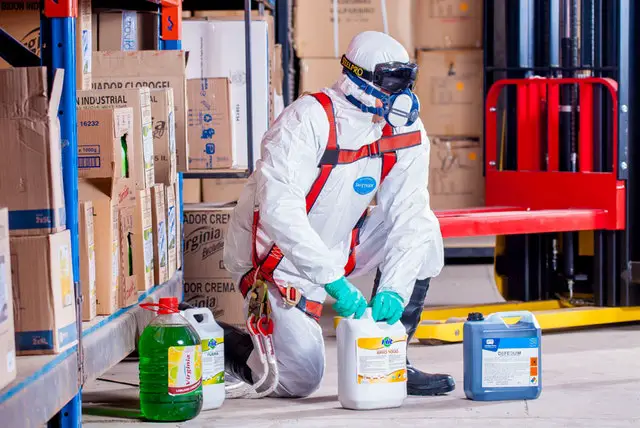Air purification is the process of removing unwanted compounds and particles from the air.
Do plants purify the air? It depends how you define air purification. On a long enough time-scale, and under the right conditions (sealed environments), plants do reduce formaldehyde, trichloroethylene, and benzene, but it’s not clear if it’s the foliage, the roots and soil that’s doing the work. If we’re talking about indoors, air exchange from doors, windows, and leaks in the building envelope are responsible for the overwhelming majority of VOC removal from the house when compared to houseplants.
We know the obvious: plants increase oxygen (through photosynthesis). And they increase humidity (through evapotranspiration). Just the thought makes me breathe a little easier (or maybe it’s the 5 houseplants within reach).
But is there a darker side to internet plant culture? Is mis-leading information spreading? Some say plants filter the air. Some say they reduce volatile organic compounds (VOC)s. Some even claim they can reduce airborne microbes. Plants have quite the reputation.
Are these sky high plant claims grounded in reality? Can phytoremediation (fixing things with plants) really accomplish all that’s claimed?
Indoor plants could purify the air through a number of pathways or mechanisms:
- Removal through the leaves and above ground vegetation
- Through the micro-organisms present in the soil micro-biome
- Adsorption on the particles in the soil
- Uptake or reactions with the root structures of the plant
But what does the data say?
If I had to recommend one resource for understanding plants and how the impact air quality It would be the following. A 2014 review of the scientific literature by researchers at the University of Copenhagen. The review cites an incredible 129 sources, they really get into it!
Read on for answers to the most common questions about air purification with plants, VOCs, and air quality related to plants.
What is the definition of a volatile organic compound?
Volatile Organic Compounds are a huge group of chemicals that evaporate at room temperature, and have a particular structure. They’re produced in a lot of human and natural processes. Plants produce them, our cars run on them, and they’re in a lot of our glues and maintenance products.
So what are some examples of VOCs? Benzene, ethylene glycol, formaldehyde, methylene chloride, tetrachloroethylene, toluene, xylene, and 1,3-butadiene are commonly cited.
VOCs are worth paying attention to, because they’re sometimes misunderstood. VOCs should be handled differently depending on the exposure levels and the environment. For example using certain VOC containing products might be fine outdoors, but indoors you would want a completely different approach.
What are the most common sources of VOCs?
Excluding methane, the majority of VOCs are produced by plants, with the most common being Isoprene.
Honing on the more toxic VOCs in indoor environments, the most common sources are newly manufactured materials and coatings including paints and other finishes.
Many VOCs are harmless at typical exposure levels. But there are certain VOCs that you want to watch out for. The most common VOCs that could be dangerous include:
- Volatile components of Gasoline, Diesel, and other fuels
- VOCs from smoke, including wood, tobacco, fuel
- Formaldehyde (from new construction, adhesives, pressed wood
- Tetrachloroethylene (a common dry-cleaning solvent)
- Xylene and Toluene (nailpolish remover, solvents, cleaning, and in finishes)
What VOC levels are safe?
With any chemical or substance, it’s important to consider not just if it’s dangerous as a yes or no. Consider in what quantities and at what exposure levels it becomes dangerous. These exposure levels, and recommended steps to protect yourself are laid out in a document called a Safety Data Sheet (SDS).
SDS’s are part of a system for managing hazardous materials in the workplace called WHMIS (Workplace Hazardous Material Information System). Here is a great example of an SDS for a polyurethane clear-coat spray.
I’ve taken WHMIS and TDG (Transportation of Dangerous Goods) courses far too many times, so I have solid knowledge on the fundamentals how to assess and mitigate the hazards of different chemicals.
If you’re experiencing symptoms or think there’s any reason to believe you’ve been exposed to VOCs in dangerous doses it’s worth having a discussion with your Doctor or a properly trained medical professional.
Is there formaldehyde in most homes?
Formaldehyde is present in small amounts in almost all homes, source. But there’s a threshold before your health will be impacted. It’s formed in the upper atmosphere as well. It’s not the presence that you need to be concerned about, it’s how much.
“Formaldehyde is a colourless gas that is commonly found in the indoor air of homes. It can be emitted from building materials and furnishings, in particular those made from pressed-wood products with formaldehyde-based adhesives. It is also a by-product of combustion and can enter indoor air from sources such as smoking, vehicle exhaust, wood-burning fireplaces and stoves, and improperly vented gas or oil burning appliances.” –Health Canada
Your local, state/province, or federal government will have guidelines on what levels of formaldehyde are safe, and what do to if you suspect levels are unsafe.
Does new furniture have formaldehyde?
New furniture is more likely than old furniture to release formaldehyde into a home or workplace. While anything wood is known to contain and emit VOCs and formaldehyde, it’s not likely to be significant in typical home conditions.
The formaldehyde will likely come from adhesives and finishes used in the manufacturing process. Formaldehyde levels can vary significantly depending on the specific glues that are used.
So yes, new furniture may have formaldehyde.
Does Ikea use formaldehyde?
This is something I’ve wondered about myself.
Ikea speaks out specifically on the topic of formaldehyde with this document. They’re working actively on reducing formaldehyde in their adhesives, and have completely eliminated it from paints and finishes.
“Formaldehyde is forbidden in all paint and lacquers used for IKEA products.” – Ikea
This was a big surprise for me. I just assumed that Ikea products would be full of the cheapest adhesives around (at least their cheaper particle board furniture).
Doing some research on the subject, I came across Ikea‘s in-house chemicals fact list. If you want to dig in a little deeper, there’s a great article here.
Can plants increase VOCs?
Yes! Plants produce VOCs, in significant quantities!
Don’t believe me? Find the nearest evergreen forest, or pick up a lemon and give it a sniff.
Elevating and crisp isn’t it?
What you’re smelling is a chemical cocktail, many of which are VOCs.
Plants produce compounds to slow or prevent the spread of disease. They fend off insects, and use the chemicals for signalling, and communication. I actually wrote an article on that, you can see it here. For pine trees, a main component of the smell is pinene (a terpene). And for lemons it’s Limonene. These are both 100% natural, and they’re both VOC’s.
The key point here is that all VOCs are not created equal. It’s a large group of chemical compounds with similar properties (they’re organic, and they’re volatile). Just because something is a chemical, doesn’t mean it’s not natural, and vice versa.
Okay, so there’s a clear mechanism for how plants can increasing VOCs in the air.
But the spirit of the question is more about VOCs that can cause negative health effects because of their concentration or toxicity.
So, what does the data say?
How do plants reduce VOCs indoors?
Associate Professor Michael S. Waring, fed up with tall social media tales, put together a data-driven first principles review of plant VOC removal. The verdict is in. Plants DO reduce VOC’s in a measurable way. But, depending on airflow and other variables, the plant’s contribution to VOC reduction could be negligible in a typical home or office.
Suppose it’s winter in a colder climate. Your house is all buttoned up. Maybe a few rooms have air vents shut or blocked. Air exchange with the outside is limited. It seems to me in this situation plants would have higher impact.
Just like water, a few potted plants do reduce airborne VOCs. But, on scale that’s negligible to every-day life. Oh well. Plants are still nice. That’s enough for me.
What does the ‘NASA Clean Air Study’, led by Dr Wolverton, say?

In 1989 a military scientist called Bill Wolverton was tasked with digging into common houseplant’s abilities to remove certain air pollutants.
The study took place over two years, and was a partnership between the National Aeronautics and Space Administration (NASA) and the Associated Landscape
There is a lot of mis-information online about the study. Often online blogs and infographics suggest that the study supports meaningful reductions in harmful compounds in a home or office. The data in the paper tells a subtler story.
The paper studied the following plants
- English ivy (Hedera helix)
- Spider plant (Chlorophytum elatum)
- Peace lily (Spathiphyllum ‘Mauna Loa’)
- Chinese evergreen (Aglaonema modestum)
- Bamboo palm (Chamaedorea seifrizii)
- Variegated snake plant, mother-in-law’s tongue (Sansevieria trifasciata ‘Laurentii’)
- Heartleaf philodendron (Philodendron cordatum)
- Selloum philodendron (Philodendron bipinnatifidum)
- Elephant ear philodendron (Philodendron domesticum)
- Red-edged dracaena (Dracaena marginata)
- Cornstalk dracaena (Dracaena fragrans ‘Massangeana’)
- Weeping fig (Ficus benjamina)[4]
- Barberton daisy (Gerbera jamesonii)
- Florist’s chrysanthemum (Chrysanthemum morifolium)
- Aloe vera (Aloe vera)
- Janet Craig (Dracaena deremensis “Janet Craig”)
- Warneckei (Dracaena deremensis “Warneckei”)
- Banana (Musa oriana)
Testing Methodology Overview
- Testing was done in 4 plexiglass chambers
- 2 chambers sized 76m (30in) x 0.76m(30in) x 0.76m(30in)
- The other 2 chambers sized 76m (30in) x 0.76m(30in) x 1.53m (60in)
- Small fans circulated air in the chambers.
- Test length was 24 hours
- As a control, the foliage from plants was removed to see if same effect occurred
- 3 Chemicals were introduced to the chambers
- Benzene
- Trichloroethylene (TCE)
- Formaldehyde
- Concentrations of the VOCs were tested using a Sensidyne-Gastech and Gas Chromatographs
- Trace metabolites (chemicals released from the plants) were also tested
- A Microbiologist examined the microbiome in the soil
The Paper’s final summary says it best:
“ Low-light-requiring houseplants, along with activated carbon plant filters, have demonstrated the potential for improving indoor air quality by removing trace organic pollutants from the air in energy-efficient buildings. This plant system is one of the most promising means of alleviating the sick building syndrome associated with many new, energy efficient buildings. The plant root-soil zone appears to be the most effective area for removing volatile organic chemicals. Therefore, maximizing air exposure to the plant root-soil area should be considered when placing plants in buildings for best air filtration. ”
Frequently Asked Questions
Is Lead a VOC?
Lead is not a VOC. Lead is a particularly toxic heavy metal. Lead toxicity is the name for metal poisoning caused by lead in the body. There’s a lot of info on Wikipedia. Lead can enter the human body through contact with contaminated air, water, dust, food, and consumer products. If you think there’s a risk you’ve been exposed to lead, contact a doctor or a trained medical professional.
Do essential oils contain VOCs?
Most likely yes. The degree to which the VOCs are toxic and harmful depends on the source of the oil, and it depends on the degree to which the essential oil manufacturer has concentrated the particular chemicals that make up the essential oil.
Is High VOC paint dangerous?
The paint itself isn’t dangerous. It’s how you are exposed to the VOCs that are released, your medical background (for example asthma), and
Can Volatile Organic Compounds be in Water?
Volatile organic compounds can be found in water, more info here.
What are acceptable VOC levels?
Acceptable VOC levels depend on the concentration in the air, how long you’ll be exposed to them, and how often this exposure will occur. It’s essentially cumulative. A good first place to look is the Safety Data Sheet for the product or chemical you’re concerned about. You can access your first few SDS’s for free here.
Can you smell VOCs?
Some VOCs are very fragrant. But others are completely scentless (like methane). So smell is not a good indicator of the presence or level of VOCs.
What is Proposition 65?
Proposition 65 is a 1986 California law that intends to protect people from toxic levels of substances that are known to cause cancer, birth defects, and reproductive problems.
What is a SDS?
An SDS is a Safety Data Sheet, formerly a Material Safety Data Sheet (MSDS). They are used by chemical manufacturers, distributors, importers, and commercial users to understand and mitigate dangerous exposure to harmful chemicals.
Conclusion
There has been a lot of research into the abilities of plants to purify the air and the results are promising. Studies show that common harmful volatiles in the air can be reduced by plants in sealed environments. This has important applications to space flight and colonization of the solar system. Air exchange with the outdoors dominates air quality considerations in the typical house. But in office buildings, there is good evidence that plants can improve air quality and comfort.
Beyond the strict metric of reduction of harmful chemicals, plants have a lot of secondary benefits. They improve mood, productivity, and provide a lot of other benefits.
If you’re running a business: I wrote a whole article digging into the benefits of bringing plants into a restaurant. Some of the answers might surprise you!
If you’re interested in learning more about the benefits of plants at home, or on your desk: check out this article that gets into some of the best plants, which ones will thrive, and some really great benefits.

I’m Alex Lafreniere. I learned a lot about plants when I built and operated a landscaping company. But, there’s always more to learn. Ever since travelling across the world, I’ve wanted to find ways to bring more tropical and exotic plants into my life. This is the site where I share everything I’ve learned with you.
This site is owned and operated by Plant Hardware, a sole proprietor headquartered in Calgary, Canada. Plant Hardware is a participant in the Amazon Services LLC Associates Program, an affiliate advertising program designed to provide a means for sites to earn advertising fees by advertising and linking to Amazon.com.Plant Hardware may also participate in affiliate programs with Bluehost, Clickbank, CJ, ShareASale, and other sites. Plant Hardware is compensated for referring traffic and business to these companies.

